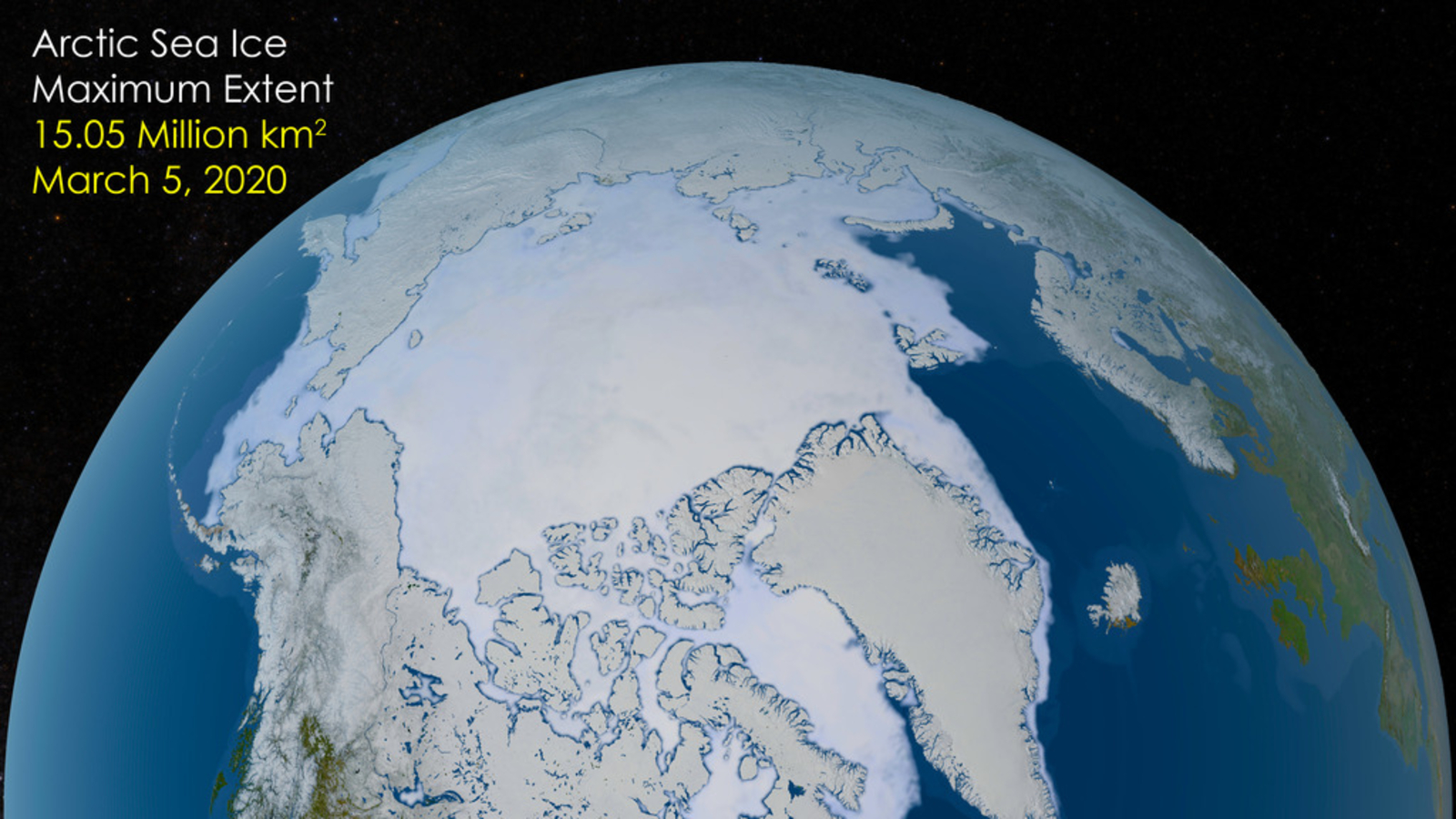US military cuts climate scientists off from vital satellite sea-ice data
A Japanese satellite is coming to the rescue, but researchers will miss out on months of crucial data.

Climate scientists in the United States are to be cut off from satellite data measuring the amount of sea ice — a sensitive barometer of climate change — as the U.S. Department of Defense announces plans to cancel processing of the data for scientific research.
The changes are the latest attacks by the U.S. government on science and the funding of scientific research in an effort to slash the budget to enable tax cuts elsewhere. Already, these attacks have seen the Goddard Institute for Space Studies and the National Science Foundation evicted from their offices, references to climate science removed from websites, funding of data for hurricane forecasts cancelled, and dozens of NASA missions under threat and their project teams asked to produce close-down plans as the space agency's budget is slashed.
Now, scientists at the National Snow and Ice Data Center (NSIDC), based at the University of Colorado, Boulder, who have been using data from the Special Sensor Microwave Imager/Sounder (SSMIS) that is flown on a series of satellites that form the United States Air Force Defense Meteorological Satellite Program, have been told they will soon no longer have access to that data. SSMIS is a microwave radiometer that can scan Earth for ice coverage on land and sea. The Department of Defense uses this data for planning deployments of its own ships, but it has always made the processed data available to scientists, too — until now.
In an announcement on June 24, the Department of Defense declared that the Fleet Numerical Meteorology and Oceanography Center operated by the U.S. Navy would cease the real-time processing and stop supplying scientists with the sea-ice data, although NPR reports that, following an outcry at the suddenness of this decision, it has been put back to the end of July.
Politics aside, purely from a scientific point of view, this is madness. The sea-ice index, which charts how much ice is covering the ocean in the Arctic and Antarctic, is strongly dependent upon global warming, with increasing average temperatures both in the ocean and in the atmosphere leading to more sea-ice melting. Sea ice acts as a buffer to slow or even prevent the melting of large glaciers; remove that buffer and catastrophic melting of glaciers moves one big step closer, threatening dangerous sea level rises. Without the ability to track the sea ice, scientists are blinded to one of the most significant measures of climate change and become unable to tell how close we are getting to the brink.
But there's even a commercial side to knowing how much sea ice is present on our oceans. The fewer icebergs there are, the closer cargo ships can sail around the north pole, allowing them to take shorter, faster routes.
Of course, the United States is not the only country to operate climate instruments on satellites. For instance, the Japanese Aerospace Exploration Agency (JAXA) has a satellite called Shizuku, more formally known as the Global Change Observation Mission-Water (GCOM-W). On board Shizuku is an instrument called the Advanced Microwave Scanning Radiometer 2, or AMSRS-2, which does pretty much the same job as SSMIS.
Breaking space news, the latest updates on rocket launches, skywatching events and more!
Researchers at NSIDC had already been looking to transfer over to AMSRS-2 data, perhaps having got wind that the Department of Defense's decision was coming down the pipeline. But the switch will take time for the calibration of the instrument and data with NSIDC's systems, leading to a gap in scientists' data — a blind spot in our monitoring of the climate that we can ill afford.

Keith Cooper is a freelance science journalist and editor in the United Kingdom, and has a degree in physics and astrophysics from the University of Manchester. He's the author of "The Contact Paradox: Challenging Our Assumptions in the Search for Extraterrestrial Intelligence" (Bloomsbury Sigma, 2020) and has written articles on astronomy, space, physics and astrobiology for a multitude of magazines and websites.
You must confirm your public display name before commenting
Please logout and then login again, you will then be prompted to enter your display name.
